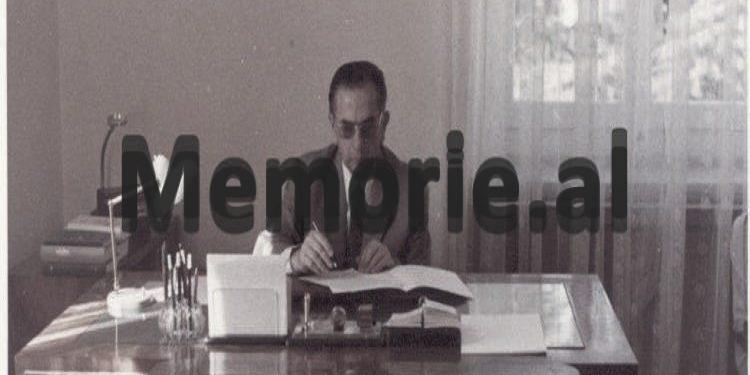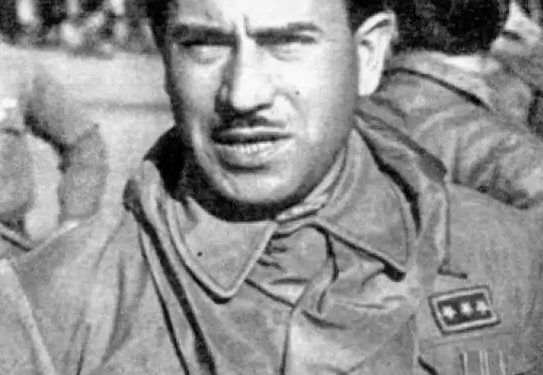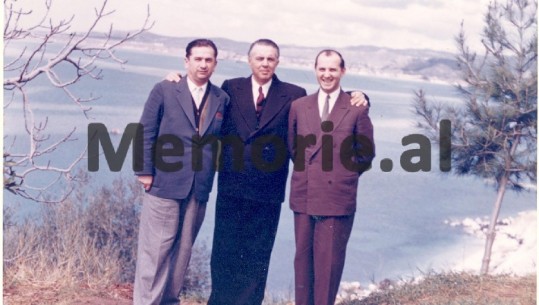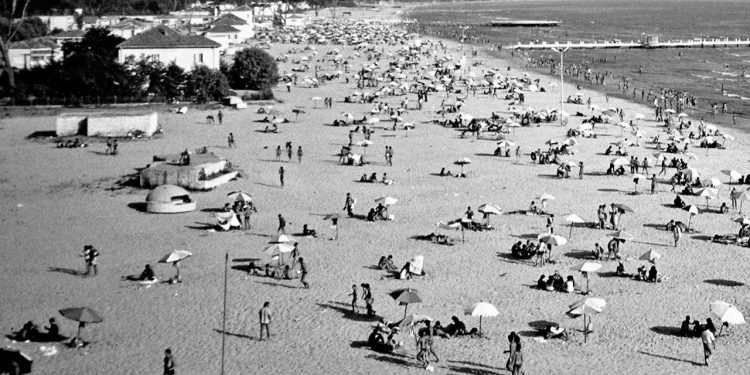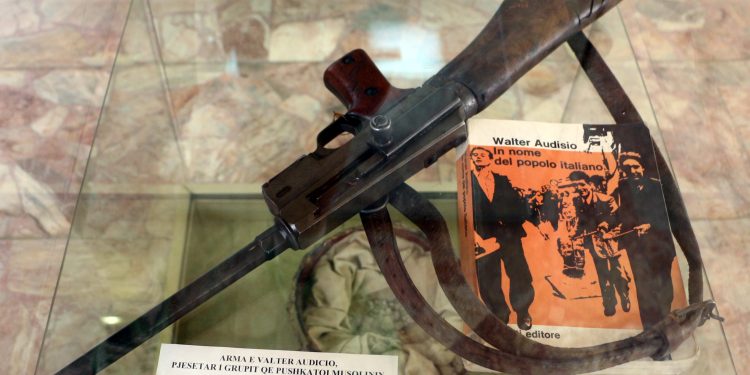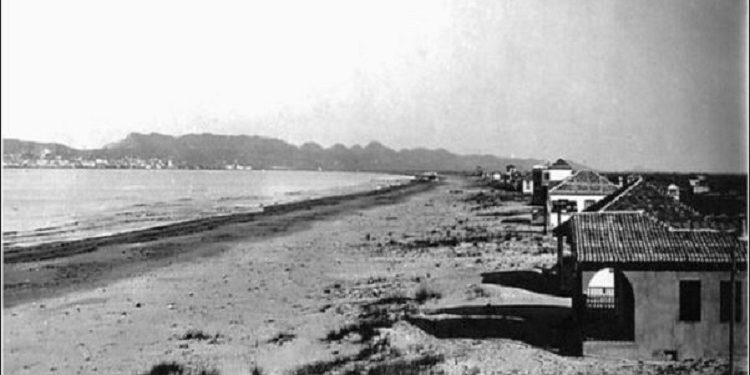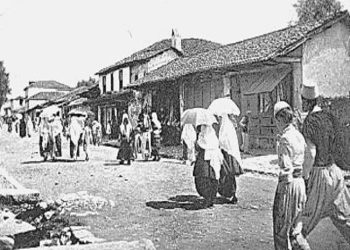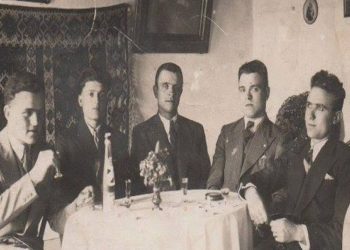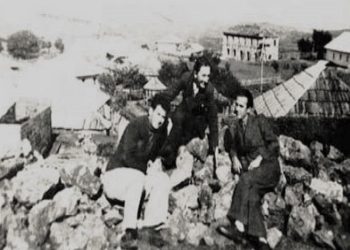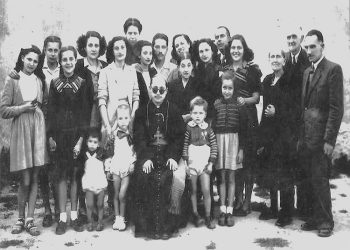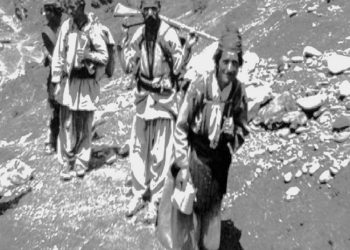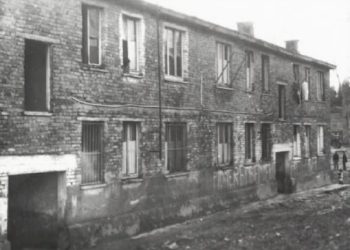By Sebi Alla
Memorie.al / Italy were boiling, right-wing extremists were showing hatred towards the political system. There were even nostalgics who considered the assassination of Benito Mussolini as unjust and a crime. The author of the Duce’s assassination was not hiding, he even participated in the political life of the country, as a deputy elected from the ranks of the Italian Communist Party. But now Valter Audicio, from a man adored in 1945, when he committed the assassination, had become hated by extremists.
In 1957, it was not at all surprising that Valter Audicio fell victim to an assassination attempt. In this heated situation, Enver Hoxha and other leaders of the Albanian Communist Party took advantage of the situation and made an official invitation to Valter Audicio. The representative parliamentarian of the Italian Communist Party was mentioned as the person who had killed the Duce and his girlfriend, Clareta Petaçi. However, someone admired him; someone else hated him for the action he took after the capitulation of fascist Italy. Now his life was in danger in Italy. The Albanian leadership was well informed about the figure of this person.
Audicio receives an invitation from Hysni Kapo
It was discussed at length in the leading bodies of the Party of Labor of Albania and finally, with the direct knowledge of Enver Hoxha, it was decided to extend an official invitation to the friend from Italy. The leaders of the ALP did not even hinder party beliefs. This was because Audicio, although somewhat of a reformist wing, was a member of the Italian Communist Party. While the discussion passed without much debate, another problem now remained: Which official would request his arrival in our country, under the pretext of vacation.
Hysni Kapo, at that time Minister of Foreign Affairs, was the only person whose duty did not prevent him from extending an official invitation to Audicio. And in fact, that is how it happened. In the early autumn of 1957, at the invitation of the Minister of Foreign Affairs, Hysni Kapo, one of the most prominent and courageous figures of the anti-fascist resistance in Italy, Valter Audicio, came to our country for a “vacation”. His name became a legend in Albania, since he discharged a magazine of bullets on the body of Benito Mussolini (the Duce), the hated dictator of Italian fascism.
How was Audicio’s arrival in our country received? Why did the leadership of that time keep this visit secret? What did Hysni Kapo discuss with the Duce’s executioner? What was Audicio’s reaction when he saw the monument to the resistance of Mujo Ulcinaku? Why did the Kapo ask his Italian friend to stay another week to rest? Why did Valter Audicio decide to promise the Kapo that he would bring to our country the weapon with which he executed Benito Mussolini? How did the weapon arrive in our country, two months after his departure? All the mysteries of one of the most discussed stories in recent times are revealed by Valter Audicio’s translator during his stay in Albania, Vangjel Moisiu, who has lived in America in recent years.
Moisiu: “Here’s what I told Audicio”
In preparation for his arrival, the Foreign Affairs Directorate of the Central Committee apparatus entrusted me with the task of accompanying the legendary friend throughout his stay in Albania. And so, from the beginning, we settled in one of the party’s holiday villas, on the beach of Durrës, which was located somewhere between the long “Teuta” bridge and the “Belvedere” hotel. Valter Audicio was a pleasant, simple man, with a very natural sense of humor, a man who spoke with a strange modesty about his brave exploits in the partisan war.
His face was somewhat dark, with a broad forehead, no hair and a narrow, short, completely black mustache. We quickly became friends with each other and I did not hesitate to ask him about the events of the partisan war and, especially about the Mussolini “drama”, the capture and execution of the Duce. Valter Audicio told me, almost in detail, how the events unfolded: how he was discovered in a war ambush hiding in one of the trucks of the German convoy (covered with a blanket), in an attempt to cross into Switzerland and then into Germany; how he was arrested together with his girlfriend, Clareta Petaçi, and that night they were placed in one of the village houses, under full surveillance; how in the early morning of the next day they were taken and, not far from the house, they both shot. This happened on April 28, 1945”.
Valter Audicio did not mention “preparatory ceremonies” or a military court, or a “last word” or a firing squad. As soon as they were placed next to a wall, the partisan commander, Valter Audicio, with his machine gun, carried out the unerring execution. Over fifteen bullets riddled the dictator’s body, which collapsed to the ground, drowning in blood.
Everything was done quickly and as if by order of the Supreme Command. Any delay could have brought complications. The bitter experience of how Mussolini, who had been arrested some time before, had been able to escape from a “blitz” action by the German major Skorzen, who landed his plane somewhere in an area of the North where the “prisoner” was being held, picked him up and sent him to Germany, made the partisans vigilant. This event was fresh, so everything had to be done quickly. It is known that how the bodies of the Duce and his girlfriend Clareta Petaçi, were hanged upside down in one of the squares of Milan and desecrated by the revolted masses.
Valter Audicio was moved when he saw the monument of resistance
During the days of his stay on the beach of Durrës, I felt an emotion of adoration and respect for his dear friend. I did not know how to please him. Despite the cold and rainy weather, I accompanied Audicio to Krujë and the ancient sites of Durrës to the ancient walls of the Illyrian-Venetian castles at the ancient “Torra” near the mole, where the hero Mujo Ulqinaku fought bravely against the invading Mussolini army, on the black day of April 7, 1939.
Seeing this symbol of the first heroic Albanian resistance against fascism, Valter Audicio rested his hands on the stones of the castle walls, meditating with his gaze towards the depths of the Adriatic, which also wetted the shores of the country of his, Italy. During the time we stayed at the beach villa, Valter Audicio was visited twice by comrade Hysni Kapo. At the first meeting, Hysni had lunch with Audicio. The conversation was quite cordial. The problems of the anti-fascist war, the contribution of the “Antonio Gramshi” battalion, and the relations between our two parties and countries were discussed.
Hysni Kapo spoke to him about the developments in Albania and the problems the country was facing. During the entire conversation, I felt relieved, because the minister spoke Italian fluently. At an opportune moment, I kindly suggested to my friend that it would be of interest to tell some details of the action of capturing and executing Benito Mussolini (the Duce). Hysni Kapo listened with attention and admiration to the brave legend of the partisan hero. The second meeting between Valter Audicio and Kapo took place a few days later.
Back at the beach villa, the minister came one ordinary afternoon, drinking coffee on the veranda of the villa overlooking the sea, the conversation returned to the memories of the war. It seemed that the heroes of the great anti-fascist war had a longing to remember the heroic experiences of the era. At the end of the conversation, Valter Audicio expressed to Hysni Kapo his desire to donate to the brave Albanian people and the Albanian Communist Party, his automatic weapon, with which he had executed Mussolini, the hated dictator of both peoples.
“Let it be a symbol of friendship and victory” – expressed Valter Audicio excitedly. Hysni Kapo thanked him warmly and they hugged as friends. Kapo suggested to Valter, to stay another week in Albania, but the distinguished friend emphasized in his thanks that he had a lot of party and parliamentary work waiting for him. The farewell with Valter Audicio was emotional: “Goodbye again!”.
How did the weapon come to our country?
It wasn’t long after his departure and it was already time for the weapon to be brought to our country. Valter Audicio kept the promise he had made to Kapo. After about two months of his arrival in our country, during that visit that was more of a vacation than a diplomatic meeting, the weapon would arrive. Through diplomatic channels, the machine gun that had executed Benito Mussolini and his girlfriend arrived in our country. On November 30, 1957, Edip Çuçi brought the automatic weapon to Hysni Kapo’s office.
At that time, the weapon was seen by many high-ranking leaders of the Albanian state. For some time, it even remained in the Archives of the Central Committee of the Party of Labor of Albania. Even though it had been donated, its publication was still risky. This is due to the fact that Audicio had not expressed a desire for it to be presented publicly. Considering the risk posed if material under the caption “top secret” was released, none of the archive employees dared to utters even a half-word about this weapon.
Then the machine gun that took the life of Benito Mussolini, forever extinguishing the era of fascism in Italy, was handed over to the National Historical Museum. Valter Audicio lived until 1973, leaving the unforgettable memory of a heroic legend. After his death, there was no longer any risk of publishing this weapon, the machine gun is of the caliber “7.65L. MAS”, model “1938-F.20830”. Valter Audicio, after the war, became a deputy of the Italian Communist Party, maintained ties with Albania, visited this country, until in 1957, he decided to donate to the Albanian state, perhaps the greatest trophy of the Second World War.
“But the gift was not public; it was a “secret gift”. In the letters that Audicio conveys this gift, he asks that the secret of the weapon, which was brought by an Albanian diplomat of the time, Edip Çuçi, be preserved”. The weapon was handed over to Hysni Kapo by Vasil Nathanaili, a contemporary of the Deputy Foreign Minister of Albania. And the secret was respected. The weapon that executed Benito Mussolini, together with his girlfriend Klarita Petaçi, while they were trying to escape capture, bears the number 801 in the archive of the National Historical Museum and is registered in the National Center for the Inventory of the Cultural Heritage of the Albanian People. It has its Albanian passport. Today it can be said that the National History Museum possesses the only weapon, with the historical exclusivity, of the assassination of Benito Mussolini.
Colonel Audicio, Mussolini’s executioner
Mussolini spent his last seven days in power in the city of Milan, where his rise to power began. On April 20, 1945, he dismissed the government officials. The Duce’s staff and friends tried to save him by disappearing towards Germany. On April 25, they set off for Como, bound for Valtellina. The convoy of cars and several other German armored vehicles was followed by Claretta Petacci and her family. In Como, the Duce wrote his last letter to his wife Rachele, urging her to flee to Switzerland. The letter was signed: They left Como on April 26 and stopped in Menaggio. A column of fascist troops, led by Pavolini, left Milan to join their leader.
On April 27, a German anti-aircraft unit, led by Lieutenant Fallmeyer, then arrived at Maso, where the partisans had blocked the road. The partisans agreed to allow the Germans to pass, but not the Italians. The order was for the prisoners to be treated kindly and not to be shot even if they tried to escape. Mussolini and Claretta spent their last night together in Mexegra, in a farmhouse. Colonel Walter Audicio was present in this partisan squad. The latter was entrusted with this important mission, on behalf of the National Liberation Committee.
On April 28, the Colonel entered the room where Mussolini and Claretta were resting. He was told that he had come to rescue them. They traveled about a mile and stopped near the entrance to the Villa Belmonte. They were ordered to get out of the car and stand behind the wall. There they were shot. A guard moved the bodies and Audicio drove to Dongo, where he gathered the remaining 15 prisoners on the list for execution. They were taken to the square and given 3 minutes, enough for a prayer service. On April 29, the bodies were brought to the “Piazzale Loreto” in Milan.
There, six of the executed bodies were hung from a beam, made of legs. They were: Benito Mussolini, Claretta Petacci, Francesco Baracco, Alexander Pavolini, Fernando Mexazoma and Paolo Zerbino. The crowd vented its fury on the bodies. While no one had thought that the very weapon that took the life of the man who wanted to return the borders of the famous Roman Empire to Italy, was located in Albania. Memorie.al




